Ali, A., Zhang, Z.D., Gao, T. et al. Identification of functional rare coding variants in IGF-1 gene in humans with exceptional longevity. Sci Rep 15, 10,199 (2025). https://doi.org/10.1038/s41598-025-94094-y.


Ali, A., Zhang, Z.D., Gao, T. et al. Identification of functional rare coding variants in IGF-1 gene in humans with exceptional longevity. Sci Rep 15, 10,199 (2025). https://doi.org/10.1038/s41598-025-94094-y.
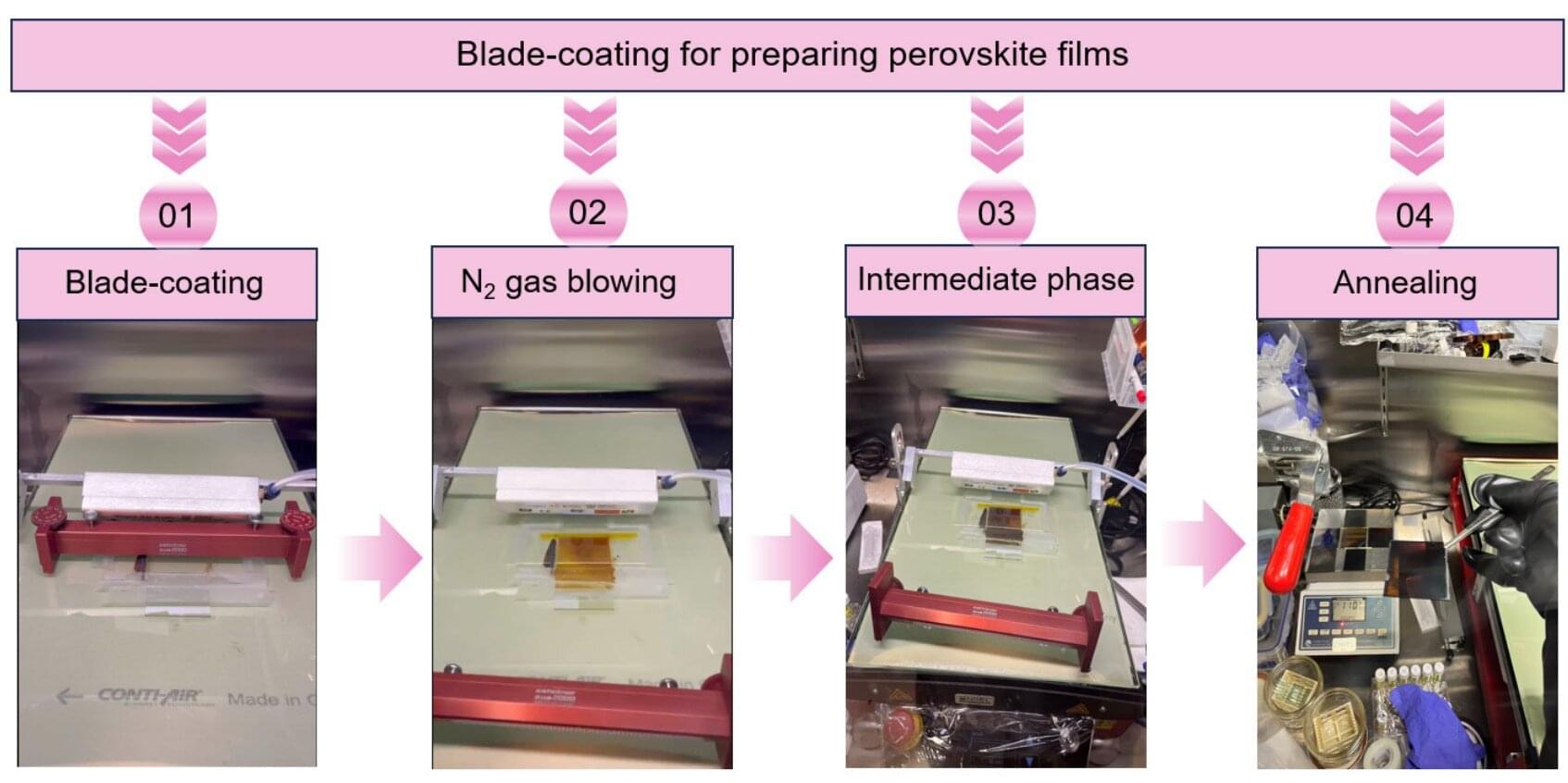
A new study in Science shows that the incorporation of a synthetic molecule into the design enhances the energy efficiency and longevity of perovskite solar cells. The benefits of the molecule, known as CPMAC, were found through an international collaboration that included King Abdullah University of Science and Technology (KAUST).
CPMAC is an abbreviation for an ionic salt synthesized from buckminsterfullerene, a black solid made of carbon atoms known as C₆₀. Perovskite solar cells are typically made with C₆₀, which has contributed to record energy efficiency. While preferred, C₆₀ also limits the performance and stability of the solar cells, leading scientists to explore alternative materials.
“For over a decade, C₆₀ has been an integral component in the development of perovskite solar cells. However, weak interactions at the perovskite/C₆₀ interface lead to mechanical degradation that compromises long-term solar cell stability. To address this limitation, we designed a C₆₀-derived ionic salt, CPMAC, to significantly enhance the stability of the perovskite solar cells,” explained Professor Osman Bakr, Executive Faculty of the KAUST Center of Excellence for Renewable Energy and Sustainable Technologies (CREST), who led the KAUST contributions to the research.
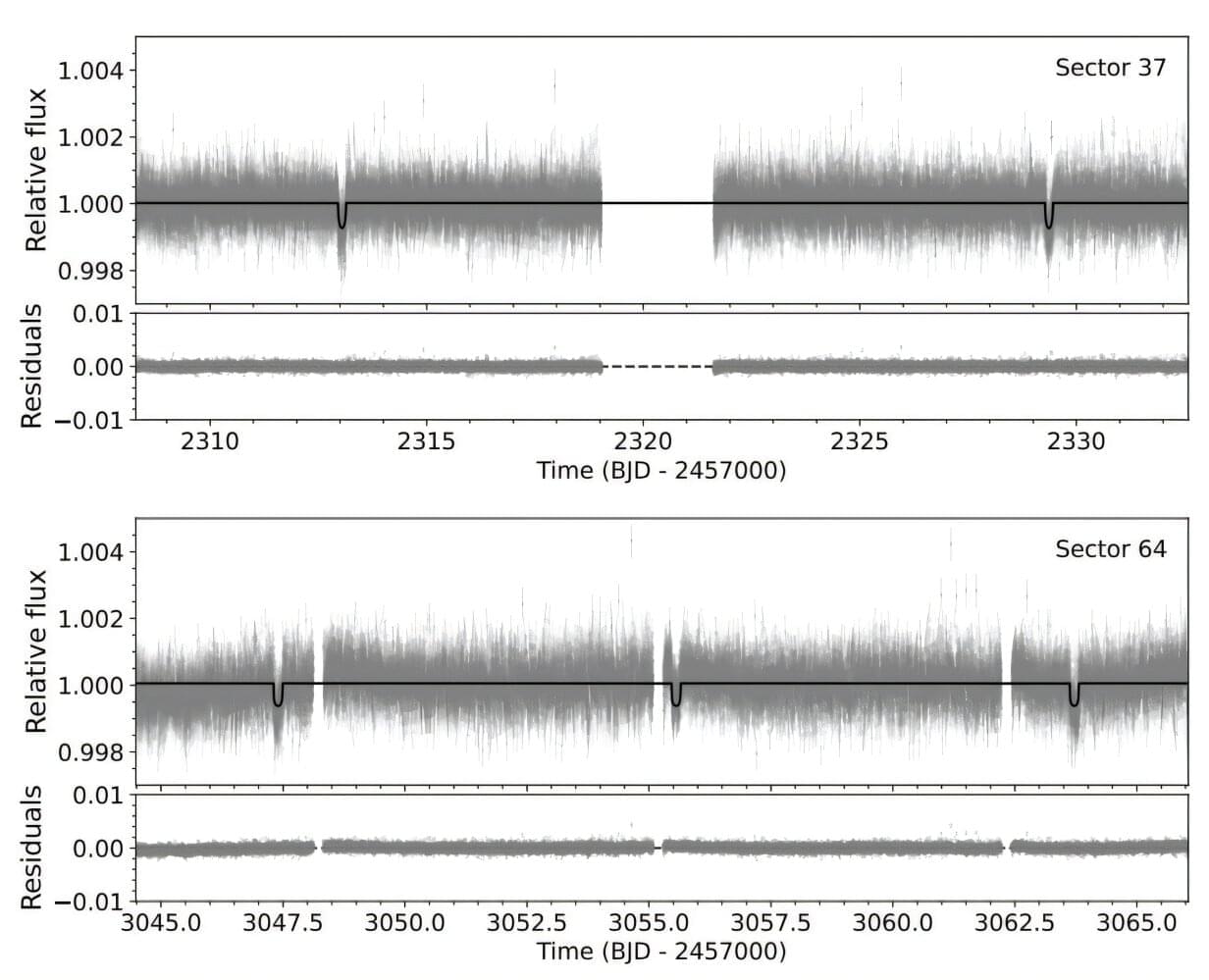
Using NASA’s Transiting Exoplanet Survey Satellite (TESS), an international team of astronomers have detected a new sub-Neptune exoplanet orbiting a bright G-type star. The newfound alien world, designated TOI-3493 b is more than three times larger and about nine times more massive than Earth. The finding was reported in a research paper published April 17 on the preprint server arXiv.
To date, TESS has identified more than 7,500 candidate exoplanets (TESS Objects of Interest, or TOI), of which 620 have been confirmed so far. Since its launch in April 2018, the satellite has been conducting a survey of about 200,000 of the brightest stars near the sun with the aim of searching for transiting exoplanets—ranging from small, rocky worlds to gaseous giants.
TOI-3493, also known as HD 119,355, is a star of spectral type G1/2 V at a distance of some 315 light years away. Recently, a group of astronomers led by Priyanka Chaturvedi of the Thuringia State Observatory Tautenburg in Germany, identified a transit signal in the light curve of TOI-3493 with TESS. The planetary nature of this signal was confirmed by follow-up observations using ground-based facilities.
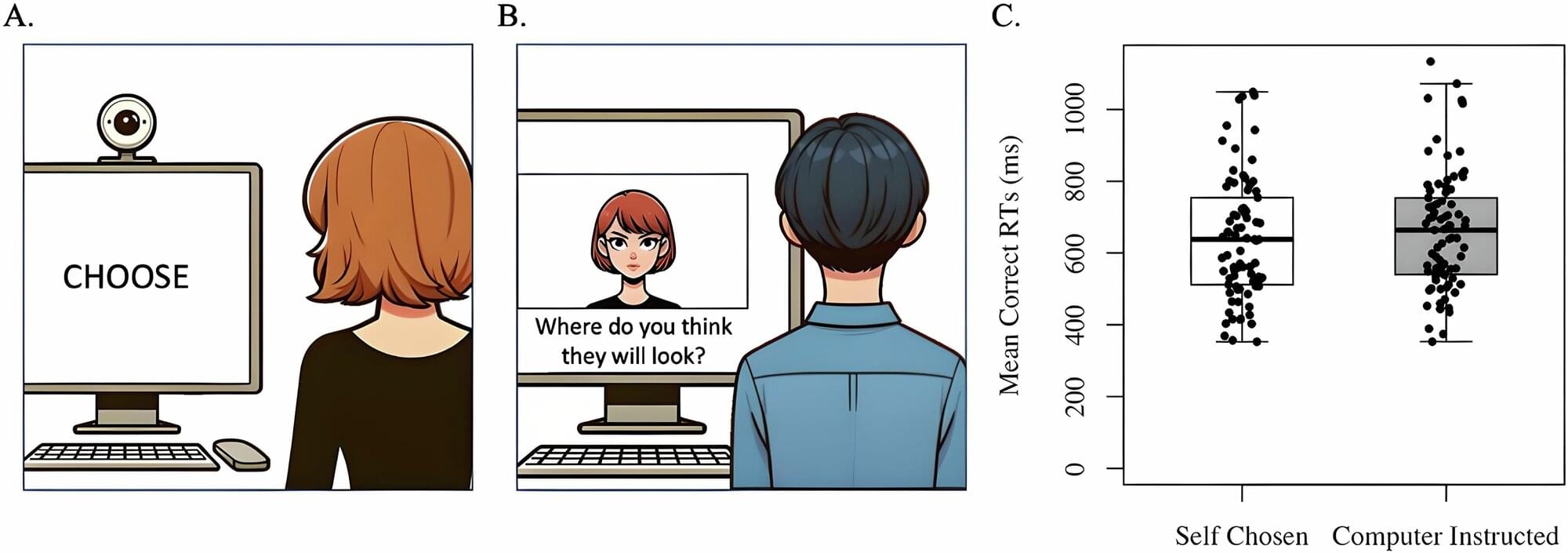
McGill researchers have demonstrated something long assumed: that glances can transmit information about one’s mental state to others without a single word being exchanged. They speculate that this primal ability may have played a role in assuring the survival of human society at times when making a sound could have attracted predators.
The research is published in the journal Communications Psychology.
“Humans have a long history of living in complex groups and social situations. It has been theorized that this has led our brains to develop a heightened ability to focus on social cues from faces, and especially from eyes,” said Jelena Ristic, a professor in McGill’s psychology department. She has been working in the field for over 20 years. “It’s a system that has evolved to support very quick exchanges of complex social information.”
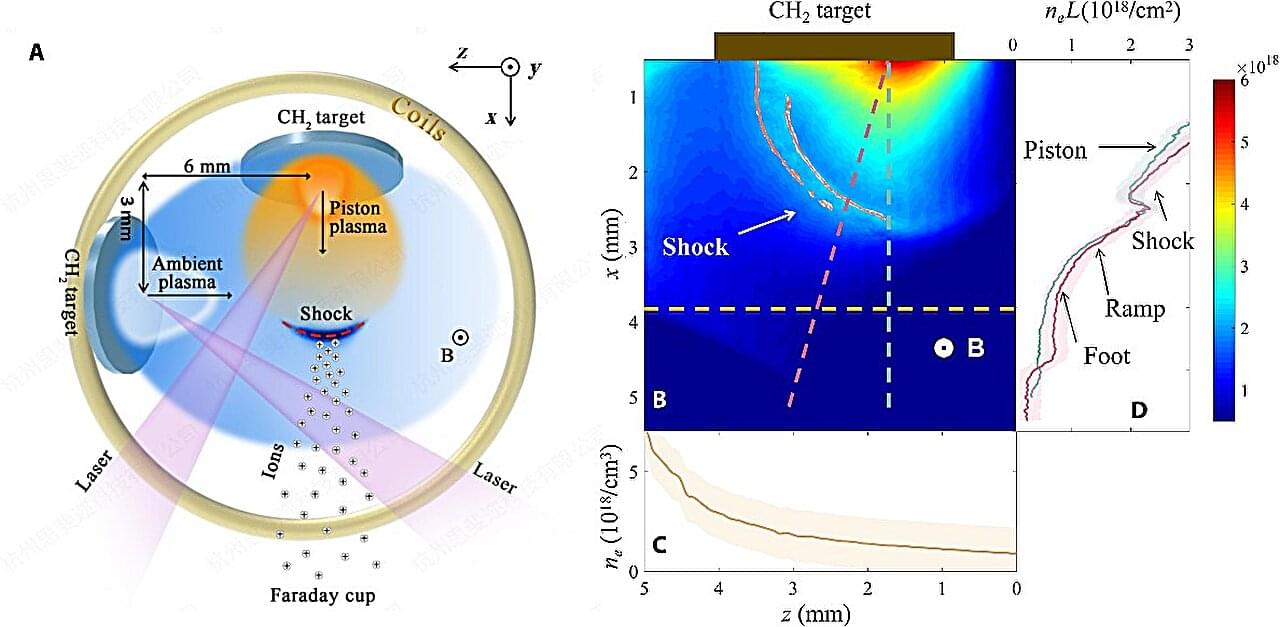
Researchers from the University of Science and Technology of China (USTC) achieved the first direct laboratory observation of ion acceleration through reflection off laser-generated magnetized collisionless shocks. This observation demonstrates how ions gain energy by bouncing off supercritical shocks, central to the Fermi acceleration mechanism. The research is published in Science Advances.
Collisionless shocks are cosmic powerhouses responsible for accelerating charged particles to extreme energies. This acceleration involves particles repeatedly crossing shock fronts, gaining energy incrementally. However, how do particles initially gain enough energy to enter this cycle? Two competing theories, shock drift acceleration (SDA) and shock surfing acceleration (SSA), have emerged, but observational limitations in space and previous lab experiments have left the question unresolved.
This new experiment, conducted at China’s Shenguang-II laser facility, recreated a controlled astrophysical shock scenario. Researchers used high-energy lasers to generate a magnetized ambient plasma and a supersonic “piston” plasma. When the piston collided with the ambient plasma at speeds exceeding 400 km/s, it produced a supercritical quasi-perpendicular shock, similar to those observed near Earth.
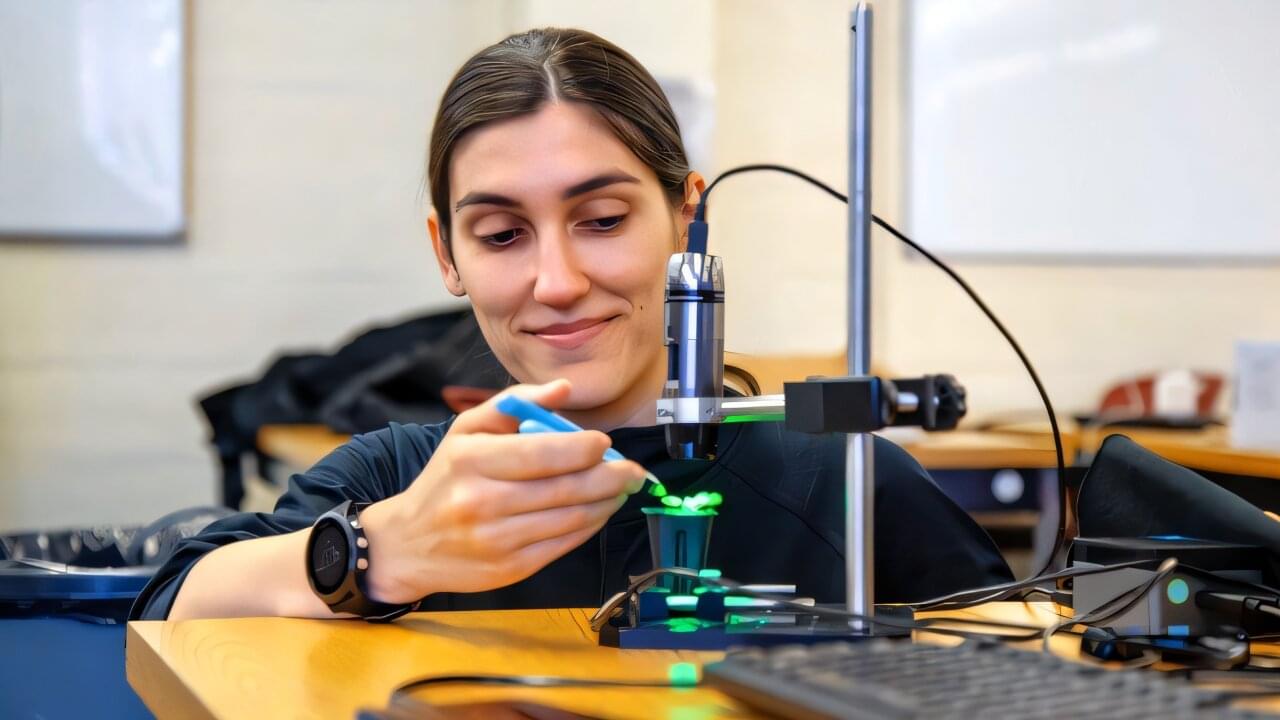
Imagine if a plant in a farmer’s field could warn a grower that it needs water? Or if a farmer could signal to plants that dry weather lies ahead, thereby prompting the plants to conserve water?
It may sound extraordinary, but researchers at the Center for Research on Programmable Plant Systems (CROPPS) have taken a major step toward advancing such two-way communication with plants.
A new study, published in the Proceedings of the National Academy of Sciences, has solved a century-old conundrum of how plants internally signal stress. By understanding how plant communication systems work, the team may then begin to exploit those signals to create plants that can communicate with people and each other, and be programmed to respond to specific stressors.
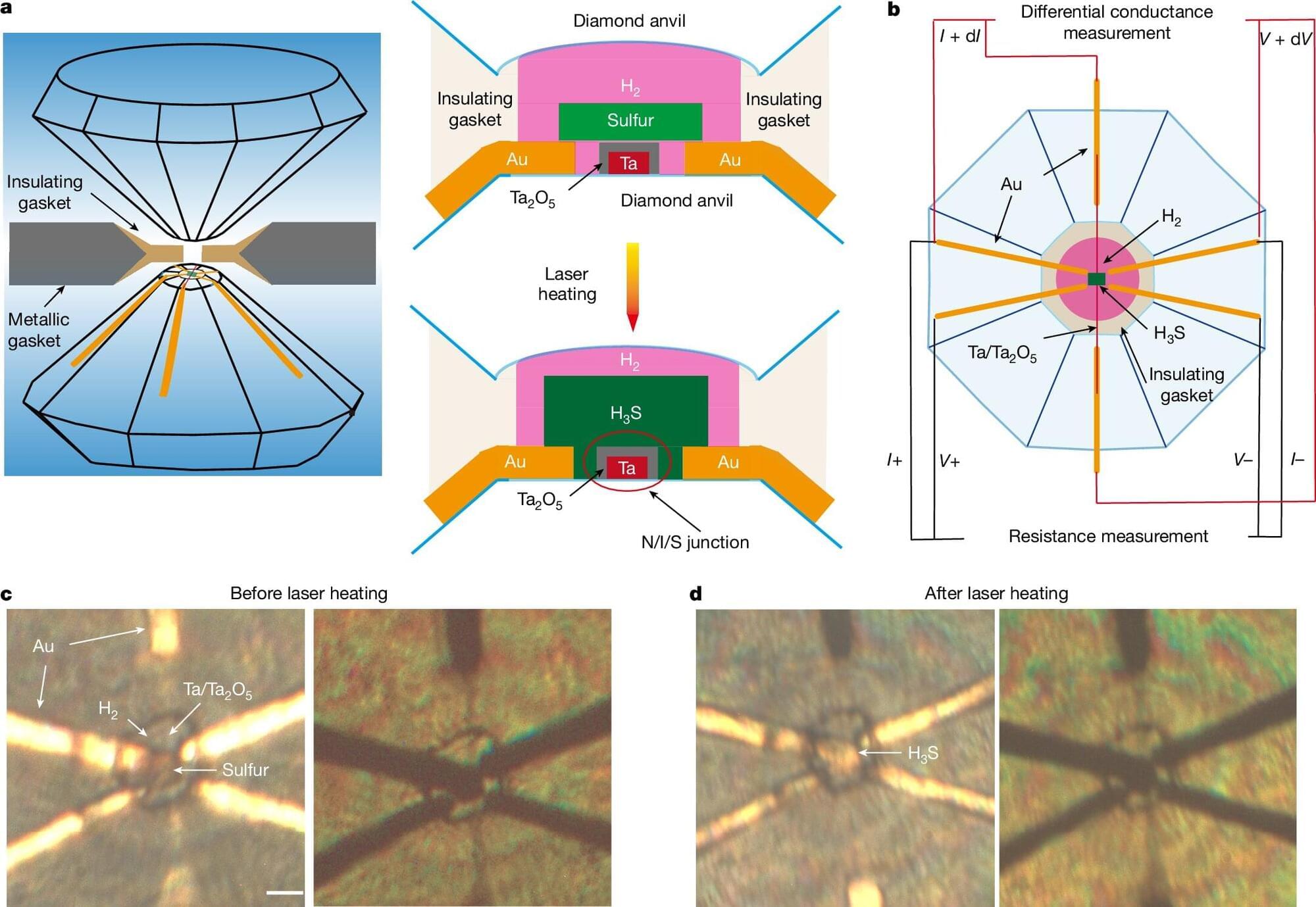
Scientists have achieved a major milestone in the quest to understand high-temperature superconductivity in hydrogen-rich materials. Using electron tunneling spectroscopy under high pressure, the international research team led by the Max Planck Institute for Chemistry has measured the superconducting gap of H3S—the material that set the high-pressure superconductivity record in 2015 and serves as the parent compound for subsequent high-temperature superconducting hydrides.
The findings, published this week in Nature, provide the first direct microscopic evidence of superconductivity in hydrogen-rich materials and an important step toward its scientific understanding.
Superconductors are materials that can carry electrical current without resistance, making them invaluable for technologies such as energy transmission and storage, magnetic levitation, and quantum computing.

Quantum messages sent across a 254-km telecom network in Germany represent the first known report of coherent quantum communications using existing commercial telecommunication infrastructure.
The demonstration, reported in Nature this week, suggests that quantum communications can be achieved in real-world conditions.
Quantum networks have the potential to enable secure communications, such as a quantum internet; quantum key distribution is one example of a theoretically secure communication technique.

Neutrinos, elusive fundamental particles, can act as a window into the center of a nuclear reactor, the interior of the Earth, or some of the most dynamic objects in the universe. Their tendency to change “flavors” may provide clues into the prominence of matter over antimatter in the universe or explain the existence of dark matter.
Physicists are particularly interested in proving the existence of “sterile” neutrinos. Their discovery would reveal a new form of matter that interacts only with gravity and could influence the evolution of the universe.
In a new study published in Physical Review Letters, a team of researchers from U.S. universities and national laboratories has set stringent limits on the existence and mass of sterile neutrinos. While they have yet to find the particles, they now know where not to look.

An exact expression for a key process needed in many quantum technologies has been derived by a RIKEN mathematical physicist and a collaborator. This could help to guide advances in quantum technologies.
Many emerging quantum technologies such as quantum computing and quantum communication rely on entanglement.
Entanglement is the mysterious phenomenon whereby two or more particles become so closely interconnected that, no matter how great the distance between them, they exhibit quantum correlations that far exceed the mutual relations achievable in classical systems.